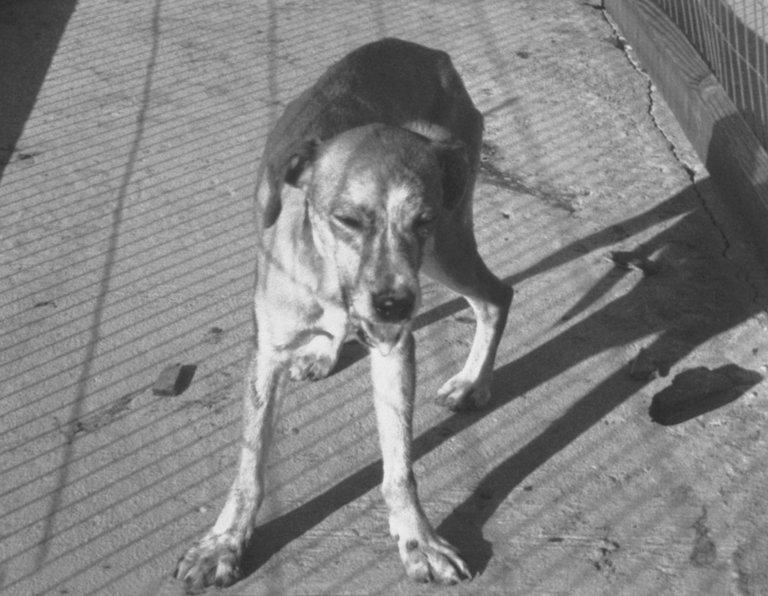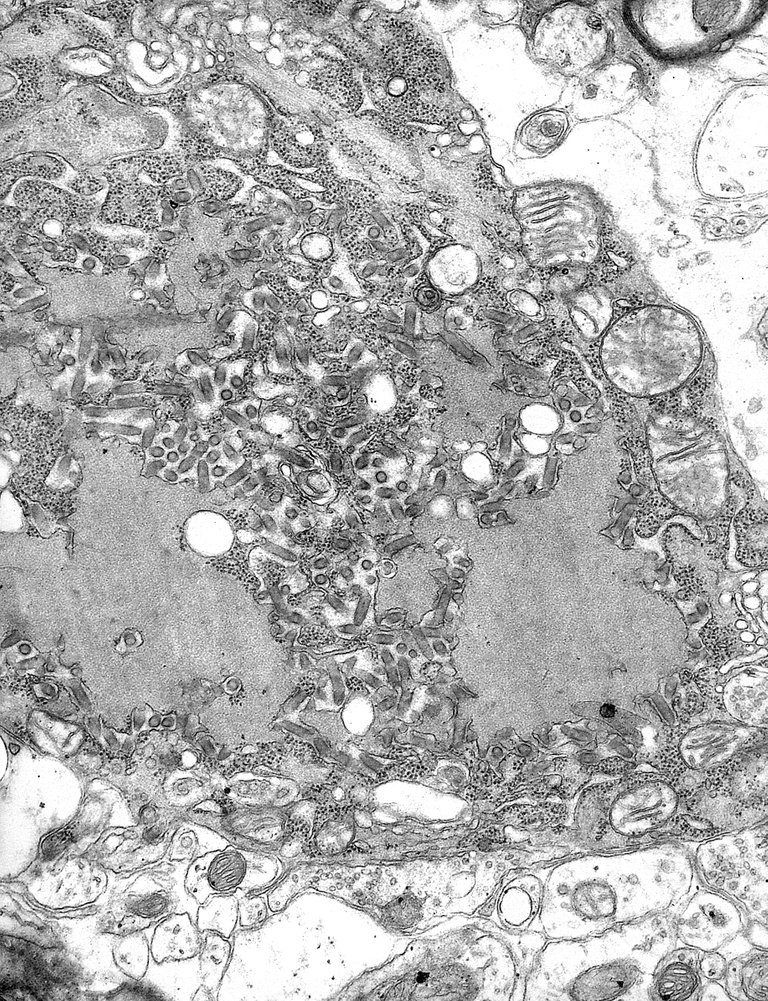There are many ilness that are treated by patients as death sentence. This kind of attitude is very wrong for instance because it's already known that without strong will of recover patients spend more time in hospital and it's much harder to them to return to normality after recovery. Sometimes doctors are responsible for that when they don't enlighten their patients about progress in medicine and knew forms of therapy to their ailment. However there is one disease that's might undermine even the best optimists. Almost everyone heard of it but noone really knows how deadly it might be.
Rabies

Rabies is a viral disease that are caused by RNA viruses(Rhabdoviridae).It's a zoonotic disease we call zoonosis with the highest death rate of all infectoius diseases!. Rabies exists in two epidemic forms:
City rabies,
Forest rabies.
In Europe the animal that transports rabies is mostly red fox. Because of that in many countries there are annual actions of setting special vaccines for foxes in forests nad meadows.
In North America rabies is usally transported by coyotes, skunks and racoons.
Africa and Asia is dominated by city rabies which is transported by stray cats and dogs. Virus might also be transported by monkeys.
Even though there are many animals that can transmit rabies still over than 99% of infections to humans are caused by dogs. Apart from bites u can get infected by salivating wound by infected dog. This virus might also penetrate our organism trough conjunctiva in spaces where concentration of rabies is very high. It sound pretty impossible but there are documented cases of this happening. Because of that cavers are specially prone to infection if they spend time in caves with bats that are infected by rabies.

How can we identify sick animal?
There is a commons saying that animal that has rabies is agressive and salivating from its muzzle. That is only partially correct. Rabies might affect animals in two main forms:
Agressive form,
Calm form.
Rabies starts with change od temperament.Animals which used to be calm suddenly change to agressive and can attack its owners but if our animal was agressive before after infection he will behave calm and meek. After this period of disease symptoms which are dominating are paralisis of nerves. Shows up symptoms such as paresis and salivation which is caused by paresis of cranial nerves. Usally wild animals are avoiding people so when they are infected they come closer and allow people to caress them and feed them.
Rabies starts inconspicuous.
In place where patient was bitten virus replicates in muscles and then through our nervous system it migrates through nerves then spinal cord to brain where it starts to massively replicate. After that virus via nervous system spreads throughout the body. It can be found in all body secretions, as well as in internal organs and muscles. The speed of movement of the virus in our nerves is quite constant and amounts to about ** 3mm / hour **. For this reason, the speed of appearance of symptoms depends on the site of the bite. The fastest registered virus incubation period was recorded in the nose (9 days) but usually the infection lasted for 4 - 8 weeks.

This is the brain of a sick person with massively multiplying viruses (small, dark dots).
How are we sick?
At the beginning, we feel only a slight itching or tingling at the bite site. This is caused by the multiplication of the virus in this place. This is often accompanied by worse mood, headaches, fever. These are nonspecific symptoms, which in many of us would not cause a sudden fear for our own health. Similarly to animals in humans, two forms can also be distinguished in the course of the disease. A violent form and a silent form. Then the disease takes the form of paroxysms, which is dominated by paralytic symptoms and seizures, increases in body temperature and hallucinations. Between attacks, he is often ill and aware of the disease.
There are two symptoms that are characteristic of rabies:
Hydrophobia- the patient refuses to take fluids due to the fear of sudden diaphragm contraction during swallowing.
Aerophobia- a gust of wind causes the patient to contract the diaphragm.
Further symptoms lead to coma and eventually to death.

In the medical literature, there are only 6 cases of rabies recovered or sustained.
Until now, we do not have treatment regimens in the case of rabies. Usually, high doses of ribavirin and the introduction of the patient into a pharmacological coma are used.
How can we defend against rabies?
There is a saying that the best form of treatment is to avoid getting sick. In the case of biting or biting, the wound should be prepared by washing it with soapy water several times and then rinsing it with clean water. It is also recommended to sanitize the wound with an aqueous iodine solution, and in some cases surgical intervention is necessary.

IThere are also rabies vaccines.
Many rabies vaccines were created, including the so-called brain vaccines, but due to the many side effects of their use in Poland, we use only safe preparations derived from cell cultures.
There are two ways of vaccination :
immunization before the exposure - conducted in people exposed professionally to contact with the rabies virus, and also recommended among people traveling to South East Asia or going to visit the caves.
immunization after exposure - consists in administering doses of the vaccine after biting. Such vaccines are administered every few days in a month so as to "overtake" the rabies that has entered our body. Unfortunately, there are as many as 8 genotypes of rabies virus while the vaccine is directed only against 1 type of virus.
There is also a human immunoglobulin against rabies, which should be given as soon as possible if we suspect a pet's bite.
How to react when we see a potentially sick animal?
The basic thing that we should do is contact the vet. In the case of a justifiable suspicion of an animal's disease, it is directed to a 15-day observation. If the animal develops the symptoms of rabies it is dormant and the material is taken for histopathological examination. We do the same if the animal falls during the observation.
According to the WHO data, about 55 thousand people die of rabies every year.

Thank you so much for reading :)
Bibliography:
- Choroby zakaźne i pasożytnicze. Redakcja naukowa Janusz Cianciara & Jacek Juszczak
- https://en.wikipedia.org/wiki/Rabies
- https://choroby-zakazne.mp.pl/choroby/158655,wscieklizna
The photos come from wikipedia.com and pixabay